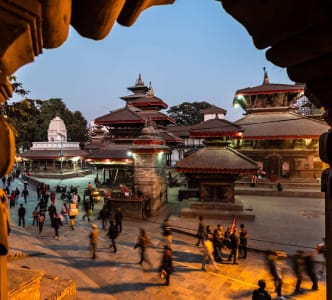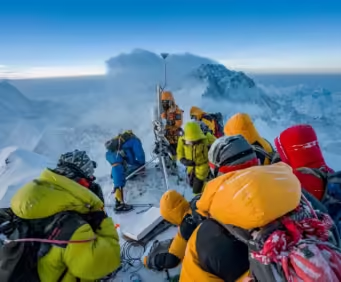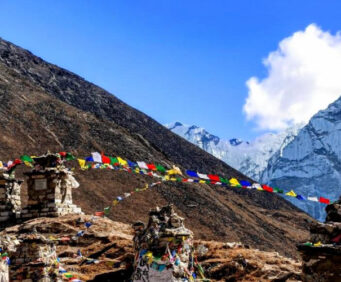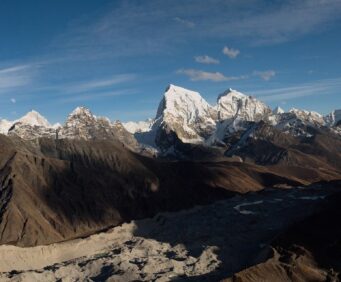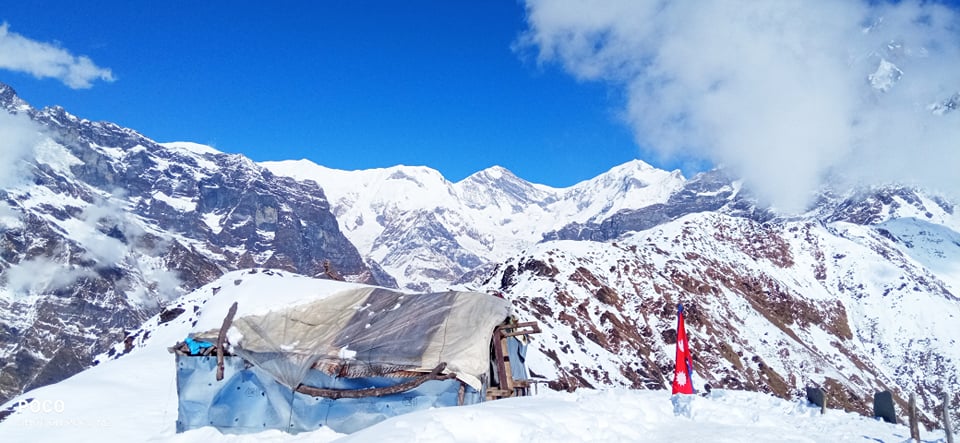
Annapurna Base Camp Difficulty
26th November, 2023 - Posted By: Himalayan AbodeTrekking to Annapurna Base Camp is a great way to learn about Nepal’s natural scenery, civilizations, and diversity. Additionally, we will talk about Annapurna Base Camp Difficulty in this essay. For those who want to see the breathtaking vistas of the Nepalese Himalayas, diverse topography, natural scenery, and Nepalese culture and tradition, this package is perfect.
Of all the high-altitude treks in Nepal, the journey to Annapurna Base Camp is by far the easiest and shortest. It’s a hike in the Himalayas in Nepal.
We can witness a range of topography, cultures, and wildlife on this trip, in addition to getting up close and personal with Dhauligiri, Annapurna, Machhapuchhre, and Himchuli. The journey accentuates how beautiful nature is in the spring.
Beautiful flowers, such as orchids and the nation’s flower, the rhododendron, blossom in the spring. The hike also offers access to the Kali Gandaki Valley, the deepest valley in the world.
The Annapurna Base Camp’s Grade
The moderate difficulty of the trek leads to Annapurna Base Camp. Starting at an elevation of 1,350 meters, the walk continues by road or plane to Pokhara. After that, proceed from Pokhara to Nayapul at an elevation of 1070 meters, traveling through a number of Syauli and Deurali villages until reaching the base camp at 4130 meters.
Trekkers with a modest level of physical fitness can finish the moderate-level trip to the base camp of the tenth-highest peak in the world. This should help you understand the Annapurna Base Camp Difficulty.
Trekkers who can walk for five to six hours a day on average may perhaps be able to complete the journey.
Annapurna Base Camp’s Duration
The moderate difficulty of the trek leads to Annapurna Base Camp. Starting at 4,130 meters, the 115-kilometer walk goes through several height changes. The walk can be finished in ten to fifteen days, depending on the time of year and the amount of hikers. Starting at 1,350 meters above sea level, the climb to Annapurna Base Camp culminates at 4,130 meters at the base camp.
You can even shorten the trekking days and omit parts of the stages if you are pressed for time. The walk takes anywhere from ten to fifteen days, depending on the trekkers’ chosen route.
The Annapurna Base Camp’s Distance
The journey to Annapurna Base Camp is roughly 115 kilometers long. The walk therefore takes ten to fifteen days. You will trek 10 to 20 kilometers and six hours a day on foot.
More often than not, climbing and descending uphill and downhill is challenging.
It is challenging to go to a high altitude with less oxygen, but the challenge is worthwhile since you will be rewarded with an amazing view of the Himalayas. This should help you understand the Annapurna Base Camp Difficulty.
You could shorten the amount of days you spend on the trail by customizing your walk. Consequently, the overall distance traveled will be reduced. Conversely, some people walk farther and for longer periods of time.
In a similar vein, you will reach your goal more quickly if you are an experienced climber. If you select the lengthier packages, you will have more time to unwind and take in the beautiful surroundings.
Challenges Faced by Annapurna Base Camp
Many hikers are curious about the challenges and would like to make Annapurna Base Camp their next destination. The trek to Annapurna Base Camp is regarded as being fairly difficult.
This climb could be more challenging because of the weather, temperature, high altitudes, and unreliable routes. However, the concept of the impossible does not exist.
With some effort and commitment, you could finish the Wonder Bar camp trek to Annapurna.
The elevation of Annapurna Base Camp is 4,130 meters. Because of this, the weather and altitude make most of the walk especially challenging.
The Annapurna base camp is located at 4,130 meters since altitude sickness might start to occur over 2500 meters. In the Himalayan region, proper acclimatization is crucial to preventing altitude sickness.
Because of this, the Annapurna Base Camp Trek is at a high altitude, and almost everyone may experience mild symptoms like nausea or headaches. This should help you understand the difficulty of Annapurna Base Camp.
Climate and Weather
Two more elements that could make trekking in the Himalayas challenging are weather and temperature. due to the unpredictable weather in the mountains.
It might undergo a dramatic transformation. Season and altitude have an impact on temperature fluctuations as well. The weather is increasingly erratic and unpredictable as height increases.
The climate and temperature of the Himalayan region are quite harsh. The winter season is the most difficult and can be rather hard on the Annapurna Base Camp Trek, despite the days being sunny, beautiful, and enticing. This should help you understand the difficulty of Annapurna Base Camp.
There’s a significant likelihood of heavy snowfall, which could block paths and roads.
However, the temperature can fall below zero during the day and as low as minus seventeen at night. The weather is normally pleasant during the day or while the sun is out.
There’s always a chance of severe winds while trekking. Because weather and climate conditions fluctuate, it is important to be prepared and bring all of the appropriate seasonal and essential apparel.
Insufficient Instruction
One of Nepal’s most well-known Himalayan treks is the Annapurna trail. There isn’t anything really difficult or steep about this hike.
That trail, however, may prove challenging for first-time mountain hikers. The journey to the tenth-tallest, most famous snow-capped mountain in the world begins with the walk to Annapurna base camp.
As such, physical strength and endurance are essential for the extremely cautious hike to the base camp of the tenth-highest peak in the world. This should help you understand the difficulty of Annapurna Base Camp.
Additionally, it would be very challenging to hike to the peak for the first time if you are not physically fit.
During your trekking days, you will often need to walk for five to six hours per day. Conversely, walking for five to six hours a day requires physical training and fitness.
If you have never gone on a walk before, you might find it hard to keep up with your group or you might tire out and slow down the walk.
In the same way, there are several climbs and descents on your path. On the other hand, a walk downhill is easier than a hike uphill.
You will get tired walking uphill at a higher altitude after a short while since there is less oxygen in the mountains.
Consequently, make sure that before starting the hike, you have finished any necessary training. Stretching, walking, swimming, and skipping are easy exercises that can help you stay in shape. This should help you understand the difficulty of Annapurna Base Camp.
Food and beverages served at the Accommodations
Hotels in Annapurna Base Camp
Everyone should consider the housing choices in the region before starting any trekking adventure. You ought to have a secure place to rest your head where you can release all of your tensions.
Consequently, accommodation possibilities for the Annapurna base camp trip are as follows.
Motel/Restaurant Accommodation
The best places to stay for hikers are found along these routes at a number of hotels and lodges. You will be staying at a reasonably priced hotel or lodge that caters to tourists. Apart from modest housing alternatives, the Annapurna Base Camp pathways also offer luxurious and upscale hotels and lodges.
The affordable, cozy lodges and hotels come equipped with free wifi, electric blankets, hot and cold showers, cushions, and comfortable beds. Most of your lodging options in Ghandruk, Pokhara, and Kathmandu will be hotels and lodges.
Tea House Lodging
Another place to stay when visiting Annapurna Base Camp is the Teahouse. In the Annapurna Base Camp path, it’s a well-liked and accessible lodging choice. In those areas, well-managed tea rooms with a broad range of amenities are operated by locals.
Tekkers rest and make plans for the following day’s trip after a strenuous and hard day of walking. They can also take in the stunning village and its unique culture and customs by exploring it.
The local teahouse has a simple wooden bed with a mattress, pillow, and blanket, as well as an electric and solar hot shower.
Additionally, there is a Western-style bathroom with a hot and cold water shower that is adjacent. The amenities and services, however, grow more restricted as you ascend higher in altitude.
Teahouse lodging is cheap, but you could have to share a room with your friends during busy times because of the high volume of guests.
Those who are alone at the base camp at busy times have to share a room with another individual of the same gender.
Camping Accommodations
You can even camp in a tent if you wish to avoid the tea houses and lodges. Usually, climbers who are planning to climb Mount Annapurna lodge in this kind of lodging.
In addition, it takes place in remote locations with limited teahouses and other housing choices. A cook and a sizable crew are assigned to different jobs, while a few tents are used as sleeping quarters.
Because of its close proximity to the teahouse and lodges, most visitors choose not to camp at the breathtakingly picturesque Annapurna Base Camp.
Food and Beverages at Annapurna Base Camp
The staple foods of the Annapurna region are traditional Nepalese dishes such as tartaric, bhat, and dal.
You will be served a large portion of steamed white rice, lentils, vegetables, spinach, pickles, and other foods in the tea rooms and lodges. A hearty dinner like Dal Bhat will fuel you for your hike.
There are numerous additional culinary options available in addition to it. For breakfast, you’ll have bread and eggs with either milk or tea. Similarly, lunch consists of roti or a meal called daal bhat.
In a similar vein, you have a choice between meat and vegetable curry ingredients. The same Nepalese cuisine is available for supper. In a similar vein, this helps you gauge the difficulty of Annapurna Base Camp.
On the other hand, a number of soups are available to keep your body warm and energized. Western cuisine, such as soup noodles, sandwiches, and momos, may be offered at certain guesthouses.
Information on Annapurna
- “The God of or the God of food” is how Hindus refer to the goddess Annapurna.
- The Sanskrit term “Annapurna” means “full of nourishment.”
- Located in North Central Nepal, the Himalayan range is home to the tallest peak in the world, Annapurna I.
- The Annapurna massif includes Annapurna I, II, III, IV, and Gangapurna.
- Everest, Dhaulagiri, and the summit of Annapurna are all composed of the same limestone.
- It is one of the hardest 8,000-meter peaks to summit, with only 38% of attempts successful.
- The Annapurna Massif is safeguarded by the Annapurna Conservation Area.
- The most trekking routes are found in Annapurna.
The Annapurna Base Camp Trail’s Difficulty
The steep paths are obviously not smooth because you are entering the Himalayas at a higher altitude. The paths may occasionally be difficult, and there will be a lot of ups and downs.
The trails and roads are not straight and level because they are full of hills and valleys. As a result, during your trip, you will need to climb and descend the uneven, pitted roads.
Walking up and down the difficult ups and downs frequently requires a lot of endurance and patience. Some hikers may get tired and suffer from altitude sickness during the trek. This should help you understand the difficulty of Annapurna Base Camp.
Eventually, you will get to the steep and long 3,300 step-stone stairs.
Advice for the Annapurna Base Camp Hike
A great approach to enjoy the alpine scenery is to travel to Annapurna Base Camp. Visits to the base camp on the tenth-highest mountain in the globe are highly recommended.
Thus, here are some ideas to help you have a more enjoyable and memorable trip.
Maintain a constant walking pace throughout the entire expedition. Moderate speed is preferred over rapid or sluggish speed. If you speed up, you will exhaust yourself soon, and if you slow down, you will find it difficult to keep up with others.
Keep the same speed throughout the expedition if you want to finish it quickly. This should help you understand the difficulty of Annapurna Base Camp and how to overcome it.
I’ve been consuming a great deal of water. Maintaining proper hydration is essential when hiking at higher elevations. Make the choice to drink water every hour to keep hydrated.
Additionally, since your body needs water for an extra hike, staying hydrated lowers your risk of altitude sickness.
Your body dehydrates quickly when you ascend to high altitudes, so you’ll need to make up for this by drinking lots of water. Additionally, while these will only slow you down, try to avoid smoking and drinking alcohol while you’re out for a stroll.
Thus, begin working out and training a month prior to the walk. Increase your endurance and stamina in order to be ready for the difficult hikes across the rugged mountains.
You risk getting lost in the Himalayas if you stray from the prescribed path.
Pay attention to what you eat and drink when you’re out and about. Eat or drink as little unhygienic food or liquid as you can, as this will make you sick and force you to call off or cancel your walk.
Conclusion
It’s not funny to walk for five or six hours every day. Your knees may give you problems. Wearing a knee cap is recommended if you experience knee pain. The numerous routes that are both uphill and downhill might be challenging for novices and intermediate walkers.
Bring some energy bars or chocolates with you. Sugar-filled foods will increase your stamina. You need to be as physically fit and resilient as possible for the trek to be successful. Moreover, take all of your particular medications. should you happen to be taking any.
Recent Posts
